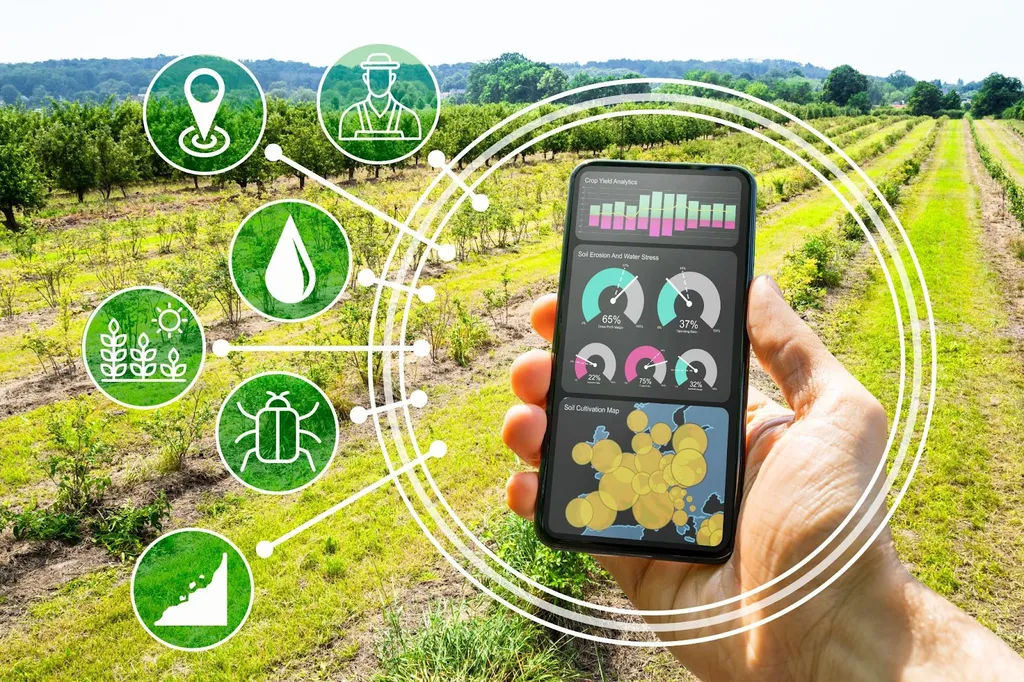In the ever-evolving landscape of precision agriculture, researchers are continually seeking innovative, cost-effective methods to monitor and optimize crop health. A recent study published in *Frontiers in Plant Science* (translated to English as *Frontiers in Plant Science*) offers a promising approach that leverages the ubiquity of smartphones and the precision of Light Detection and Ranging (LiDAR) technology to estimate key plant parameters. The research, led by Aravind Harikumar from the School of Materials Science and Engineering at Nanyang Technological University in Singapore, focuses on Chinese spinach (Amaranthus dubius) but holds broader implications for the agricultural sector.
The study addresses a critical need in modern farming: accurate and accessible methods for estimating leaf nitrogen concentration and shoot dry-weight biomass. These parameters are vital for crop yield management, stress assessment, and nutrient optimization. Traditionally, obtaining such data has required sophisticated, high-resolution sensors and cameras, which can be expensive and inaccessible to many farmers. Harikumar and his team propose a more accessible solution by integrating smartphone-based RGB imagery with LiDAR data.
“We aimed to develop a method that is not only accurate but also practical for farmers to use,” Harikumar explained. “By combining the widespread availability of smartphones with the precision of LiDAR, we can provide a cost-effective tool for monitoring crop health and optimizing nutrient management.”
The researchers derived spectral features from RGB images and structural features from LiDAR data to predict leaf nitrogen concentration and shoot dry-weight biomass. They also investigated how plant traits, modeled using smartphone data-based indices, respond to varying nitrogen dosing. This approach enables farmers to identify the optimal nitrogen dosage to maximize yield in terms of shoot dry-weight biomass and vigor.
To evaluate the performance of their method, the team employed three regression approaches: support vector regression, random forest regression, and lasso regression. The results were impressive, with best-case relative root mean square errors as low as 0.06 for leaf total reduced nitrogen concentration, 0.15 for leaf nitrate concentration, and 0.05 for shoot dry-weight biomass. These findings demonstrate the potential of smartphone-based sensing as a reliable tool for precision agriculture.
The implications of this research extend beyond the immediate case study of Chinese spinach. As precision agriculture continues to evolve, the integration of smartphone technology and LiDAR data could revolutionize how farmers monitor and manage their crops. “This study lays the groundwork for smartphone-based estimation of leaf nitrogen concentration and shoot biomass, supporting accessible precision agriculture practices,” Harikumar noted.
The commercial impacts of this research are significant. By providing farmers with a cost-effective and accessible tool for monitoring crop health, this technology can enhance productivity and sustainability in agriculture. As the global population grows and the demand for food increases, innovative solutions like this will be crucial in ensuring food security and optimizing resource use.
In the broader context of smart farming, this research highlights the potential of integrating advanced technologies with everyday devices. As Harikumar and his team continue to refine their methods, the agricultural sector can look forward to more efficient, data-driven approaches to crop management. The study, published in *Frontiers in Plant Science*, represents a significant step forward in the quest for sustainable and productive agriculture.

